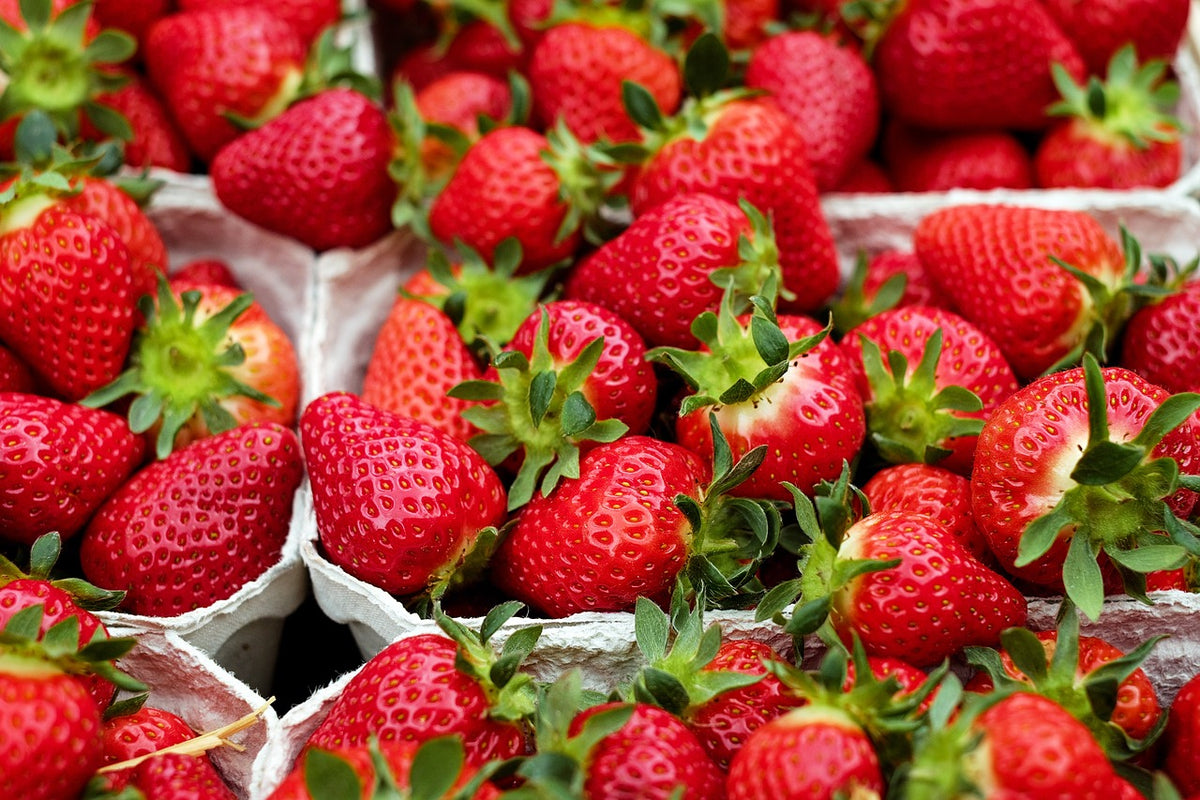
We love the month of June, particularly as the soft summer fruits and fresh vegetables start to emerge where you can really add flavour to your dishes.
Strawberries
The one fruit that seems to jar more than any other when seen out of season. Perhaps because it conjures childhood memories of warm summer afternoons spent picking plump berries that you had waited all year to enjoy. A strawberry in a hermetically sealed plastic punnet, in a chilled counter at a supermarket in December, is a poor imitation.
Traditionally at their peak in late June, just in time for Wimbledon, these days, due to improved growing techniques and cultivars, the season can be enjoyed from May to September (but no longer, please).
Look for fresh-picked, vibrant-coloured fruits. As soon as you refrigerate them the flavour starts to alter, so look for shops that sell them un-chilled. Search out specific varieties to enjoy; not all strawberries taste the same. Only wash and de-hull the berries just before eating. Be a purist and enjoy them unadulterated, adding cream if you must or balsamic vinegar to hide those that lack flavour. Rhubarb with strawberries is a perfect summer crumble. Jam that retains essential strawberriness over sugary sweetness is a wistful reminder of the summer gone.
Broad Beans
The earliest bean to arrive each summer, broad beans are around just long enough for you to explore their use in a number of different ways. Also known as fava beans, in other countries they’re dried to save for winter stews. But in the UK we make the most of them fresh, during their short summer season.
If you grow them yourself, when they’re very young and a pod is only the size of your little finger, they can be cooked whole. Drop the pods into boiling water for a few minutes, then remove and dress. However, most of us will pick or buy broad beans fully grown, when they need to be removed from their velvety pods, then dropped in boiling water for a matter of minutes. When they’re young and fresh you can eat them skin and all. But if they’re starting to wrinkle, try removing the grey skins once cooked, to unleash the fluorescent green kernel inside. (It’s a bit of a faff but your tastebuds are duly rewarded.)
Broad beans suit all manner of foods and are equally at home alongside some new season’s roasted or grilled lamb as they are by themselves, dressed in oil and herbs. They look delightful in a risotto with fresh peas and goat’s cheese, or suit being blitzed into a houmous-like dip. However you eat them, they are at their happiest when served with mint.
When buying beans in their pods it can be hard to gauge how much you should buy; it of course depends on how many beans are in each pod, but as a guide allow about 500 g of pods per person.
Garlic
Around this time of year you’ll find ‘wet’ or fresh garlic in the shops. The fleshy bulbs that we most often use are in fact dried in the sun. Wet garlic, or bulbs that have been just harvested in summer (traditionally garlic is planted on the shortest day and harvested on the longest day), are much milder and have a fresher ‘greener’ flavour.
Garlic is so widely used around the world as an aromatic that it almost deserves a chapter of its own. Marrying incredibly well with so many other herbs, spices and ingredients, we could hardly imagine cooking without it. Garlic can turn stale quickly, so keep an eye on your bulbs, discarding any that feel soft or empty. Any green shoots should be removed before use.
Garlic can be bought ‘ready minced’, dried and as garlic salt but, frankly, don’t waste your money. Besides, who can’t be bothered to smash a garlic clove? It’s cleaning the garlic crusher that makes the job boring; we don’t own one. Simply cut the root end from a clove of garlic, give it a sharp whack with the side of a heavy knife and the skin will peel away.
← Older Post Newer Post →

